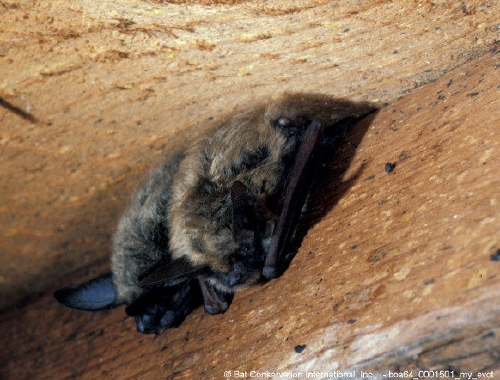Long eared Bat (Myotis evotis) (Thank-you to Dr. Merlin Tuttle, Bat Conservation International for use of this picture)
(Thank-you to Dr. Merlin Tuttle, Bat Conservation International for use of this picture)
The long-eared bat is appropriately named! It's ears extend 5 mm past it's nose when they are gently laid forward! It's colour is extremely variable, from yellowish brown to dark brown, almost black. The wing membranes and ears are black. They weigh about 5.5 grams (0.2 oz's), but have been recorded as high as 8.6 grams (0.3 oz's). They range from grasslands to ponderosa pine forests, and as high up as 1220 m (4002 ft ASL). They roost mostly in trees, but maternity colonies are usually located in buildings, where there will be 5 to 30 individuals. These bats tend to emerge to eat from 10 to 40 minutes after dark. Their echo-location sounds are a short, high pitched sound, probably an adaptation for hunting in heavy vegetation type habitats. These calls are not easily detected by moths, and these bats will often stop calling to listen to sounds produced by its prey. Since a moth's wings will make a fluttering sound, long-eared bats with their acute hearing ability, may be able to hear the fluttering and use the sounds to find their prey! Very little is known about these bats.